What does deer-RESISTANT mean?
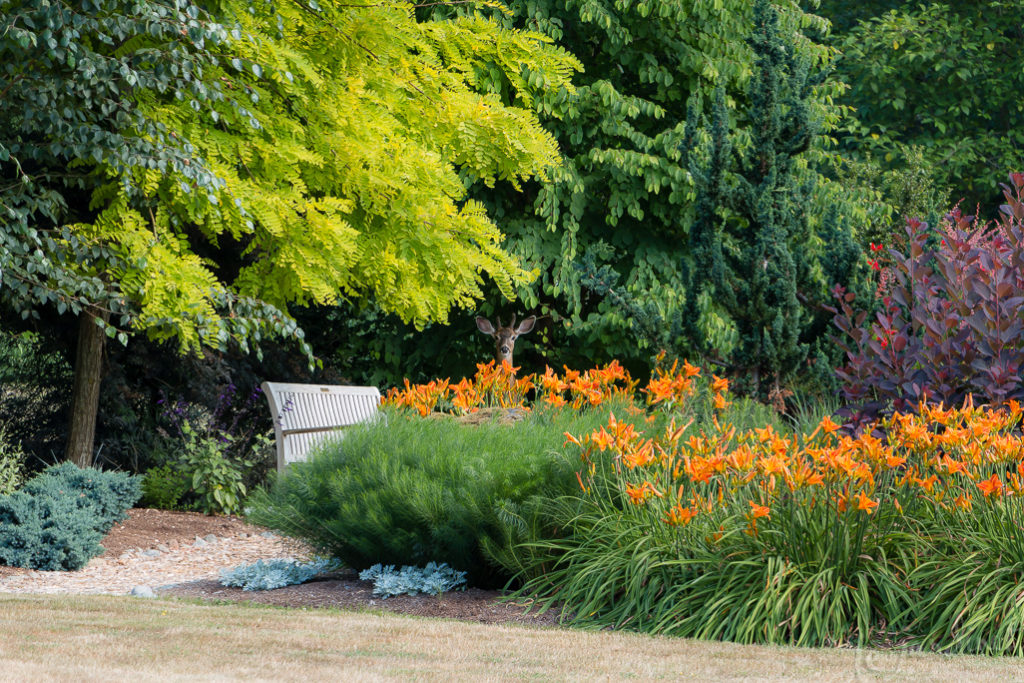
If you share your garden with deer, you'll be familiar with the term, and when shopping for plants have undoubtedly asked nursery staff for assistance in choosing things that are deer-resistant. Yet what does that really mean?
Let's be clear: it does NOT mean deer-PROOF.
With that out of the way let's dive a bit deeper so you can make informed choices when choosing plants and strategic decisions when siting them.
Start here:
My go-to reference for whether or not a plant is deer-resistant is the Rutger's website. The great thing about this site is that it is backed by considerable professional experience and observations and lists a plants LEVEL of resistance (more about that in a moment). The downside is that they are based in New Jersey, so there is some significant variation in their observations and mine here in Washington state. It is, however, an excellent place to start.
Understanding levels of deer-resistance.
It isn't black or white – there are levels of resistance that it is helpful to understand. The Rutger's website site uses the following grading system:
A = Rarely Damaged
B = Seldom Severely Damaged
C = Occasionally Severely Damaged
D = Frequently Severely Damaged
They recommend selecting plants that fall into categories A or B if you share your garden with deer, unless you are willing to protect plants with fences or sprays.
But what does "seldom severely damaged" look like?
Let me share a few case studies from my own garden to give you an idea.
New Guinea impatiens (annual)
Although this species (Impatiens hawkeri) is not listed on the website, both Impatiens balsimina and Impatiens walleriana are listed as level C, so one could assume a similar rating for New Guinea impatiens.
I have one New Guinea impatiens in a container design along the primary deer route. It has been there for 8 weeks without any damage whatsoever.
Two nights ago this happened…
So, yes the damage is occasional, and yes it was severe – but they haven't destroyed the whole plant, just taken off about 90% of the flowers! One squirt with the deer repellent spray would have avoided even that but it has never been eaten before this year and I've grown them for at least three years in containers exposed to the deer… (i.e. " VERY occasional damage"….). The good news is that everything else in the pot was untouched! Knowing (and seeing) that, will you include these and spray them – or avoid them entirely?
Sekkan-sugi Japanese cedar (conifer)
We began to develop a large privacy screen about 7 years ago. It includes conifers, deciduous trees, broadleaf evergreen shrubs, and grasses.
In the center of the photo above you can see a beautiful golden Japanese cedar, (Cryptomeria japonica 'Sekkan-sugi'). When it was still quite young the deer did one of their nightly stealth raids and this was the result:
They didn't eat the tree – but they did damage it by rutting against it. Thankfully the conifer coped with the damage and seemed to grow out of it over the next year, so I'd agree with the rating of B. I would advise also fencing the tree when young to get it established.
Corkscrew hazel (deciduous shrub)
I love the twisted foliage, stems, and catkins on the Red Majestic corkscrew hazel (Corylus avellana 'Red Majestic')
If you only saw the above image, you'd be tempted to think the entire shrub was a loss, but that isn't the case. See it in the broader context:
The shrub is at a turning point in the path – and on the major deer-highway. It was easy to taste a few convenient leaves but they clearly didn't deem it tasty enough to devour more.
That being the case, I'd agree with the Rutger's rating of B ("seldom severely damaged"). Plus the shrub has been here for three years and I think this is only the second time I've noticed any damage at all. So will you choose to grow it?
Now what?
Now you can make informed choices about the plants you select, assess your level of tolerance for damage, and decide where to place these plants in the landscape. For example, I'd suggest any major focal points and specimen plants are always selected from A or B. If you really want to try something listed as C or D then at least set it farther back into the border so damage is less noticeable and don't use that plant for an entire hedge!
Footnote 1 – Rutgers vs. Karen
Where I differ from Rutgers:
Heavenly bamboo (Nandina domestica cvs..) are totally decimated by deer in my garden (D+!). Rutgers lists it as C – which I think is a change as I swear they used to list it as B! (In Texas and North Carolina it is actually considered at least B)
Gold dust plant (Aucuba japonica) – in WA they are C or even D. Rutgers lists it as B.
Footnote 2 – What Rutgers misses
Arkansas bluestar (Amsonia hubrichtii) is not on the Rutgers list – I would rate it as A, never having had any damage whatsoever in 7 years. It is also my favorite perennial of all time!
Telekia (Telekia speciosa) is a large, shade-loving perennial with steroidal foliage and yellow daisies. It takes a few years to outwit the slugs here in the PNW but mine now reliably grows to 5-6' tall each year despite deer, rabbits and our over-abundance of molluscs. I'd confidently rate it as A since the deer walk past it every day. (Not listed on Rutger's)
Gaura (Gaura sp.) is also conspicuous by its absence from the Rutgers list. Most definitely A++ here.
A special gift for you!
if you'd like to spice up your deer-resistant plant selection, you'll enjoy this list of 15 FUN Deer-Resistant plants that I've created. It is FREE for my newsletter subscribers. Just sign up here:
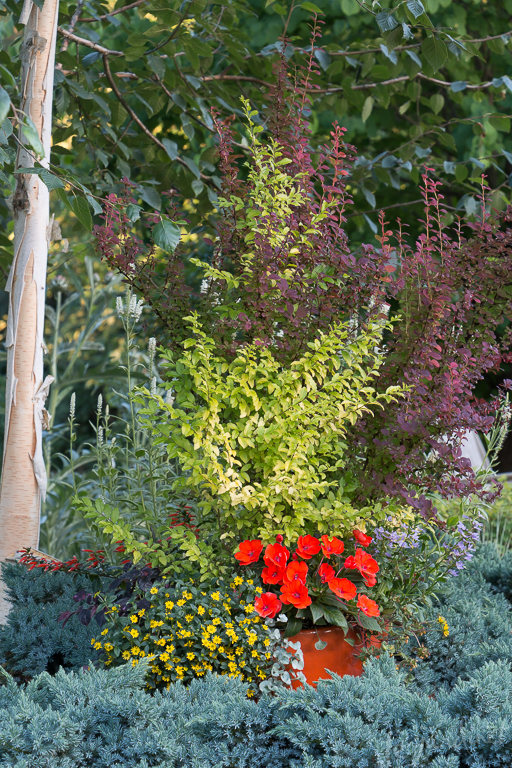
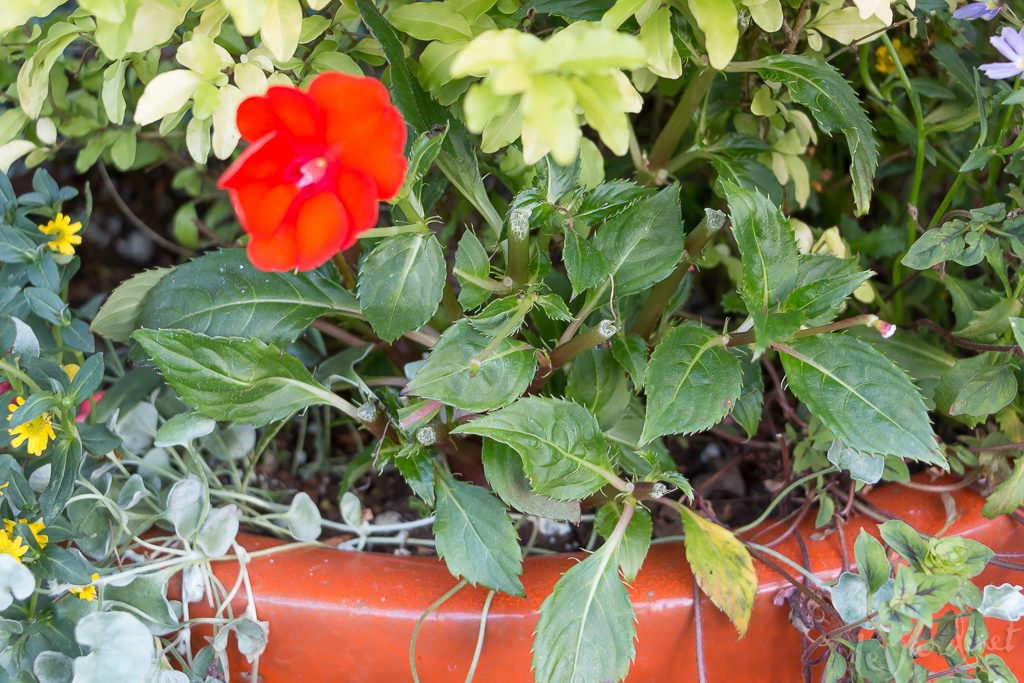

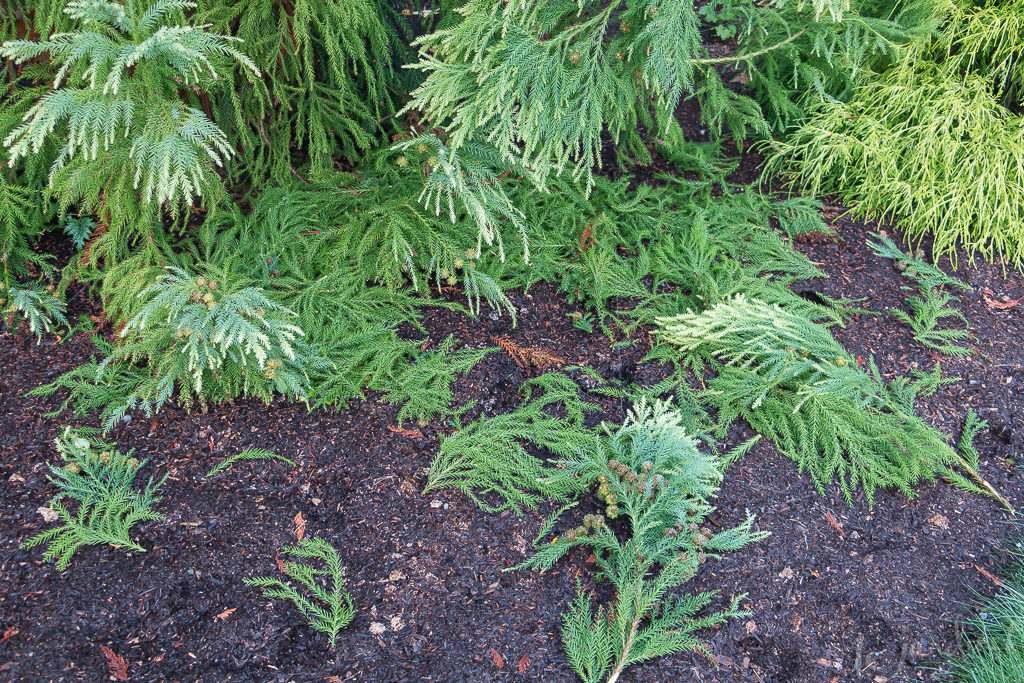
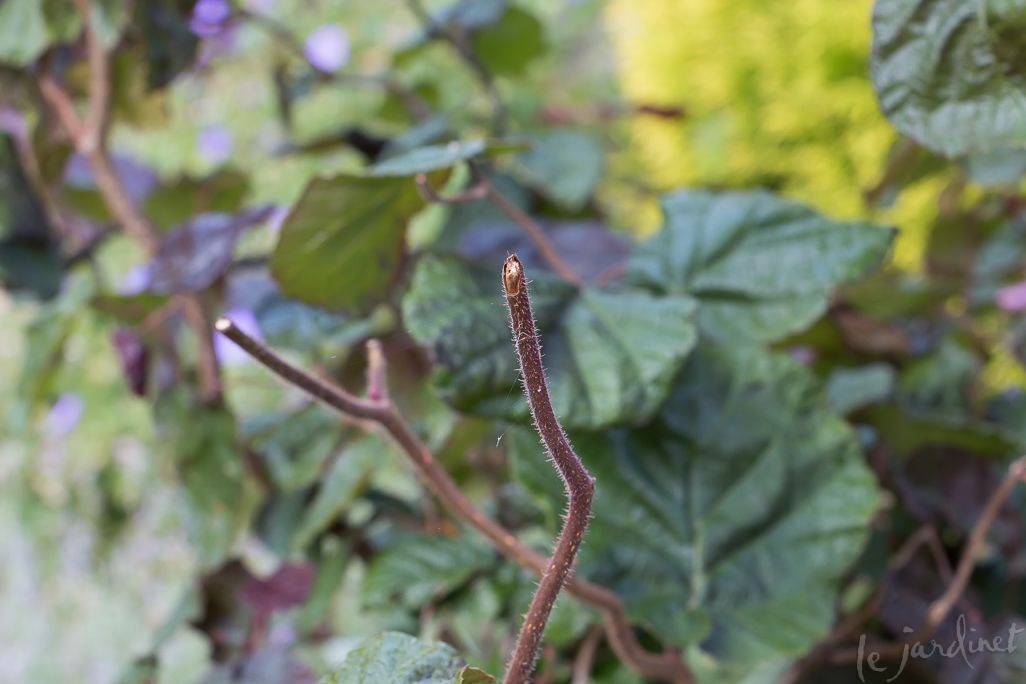

This is s
the first year that the deer have eaten my hosta
There's always something!
Hi Karen,
We have a place on one of the gulf islands. Lots of sun, clay, and deer! So I am so glad to have found your site! Would you please tell me what the tree with the pale peeling bark is growing beside the pot? Is it a form of birch? River birch? Any specific variety? Lois
Hi Lois, that is a Himalayan birch (Betula utilis 'Jacqumontii')